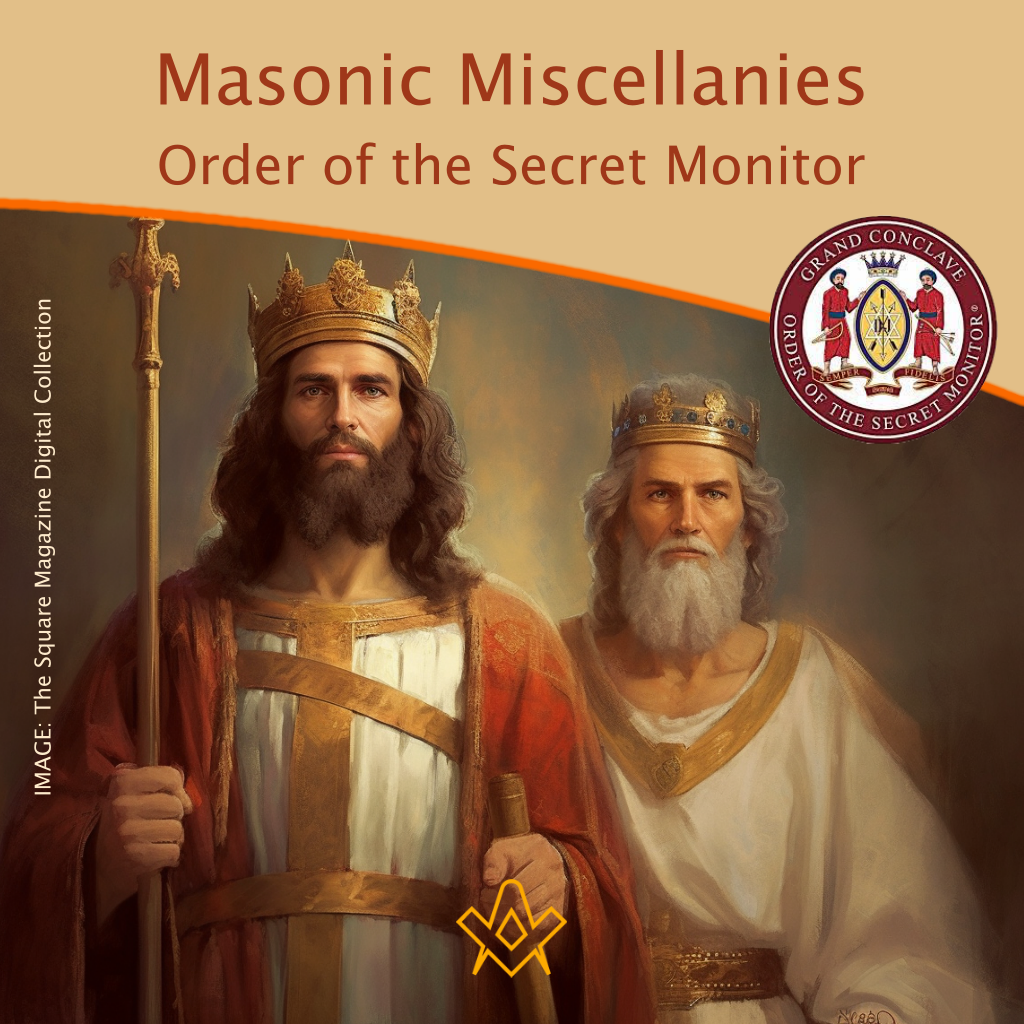The Order of the Secret Monitor (OSM) is an Appendant Order of Freemasonry. It is a relatively lesser-known Masonic organization that exists in certain jurisdictions around the world.
The OSM focuses on promoting friendship, brotherhood, and the principles of Masonic teachings.
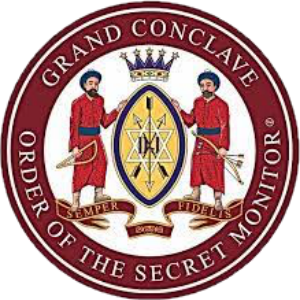
The Order of the Secret Monitor
The order is often referred to as a “side degree” or “side order” within Freemasonry, meaning it is an additional degree that Masons can pursue after attaining the Master Mason degree, which is the third degree in the Blue Lodge.
The Order is based on the friendship of the biblical figures of King David and Jonathan (the eldest son of King Saul), who according to the Books of Samuel in the Hebrew Bible, formed a covenant, and took a mutual oath.
The ritual of the OSM emphasizes the importance of secrecy, fidelity, and the watchful care of one’s brethren. It draws its symbolism and teachings from the biblical stories.
Membership in the Order of the Secret Monitor is usually by invitation only. It consists of a series of degrees, each with its own rituals, teachings, and ceremonies. These degrees often incorporate allegorical narratives and symbolic elements to convey moral and ethical lessons to the members.
It’s important to note that the Order of the Secret Monitor may vary in its practices and structure depending on the jurisdiction or Grand Lodge under which it operates. Therefore, specific details and rituals may differ between different regions or Masonic jurisdictions.
Albert Mackey describes it in his Encyclopaedia of Freemasonry:
An honorary or side Degree once commonly conferred in the United States. The communication of it was not accompanied, it is true, with any impressive ceremonies, but it inculcates a lesson of unfaltering friendship which the prospect of danger could not appal, and the hour of adversity could not betray.
It is, in fact, devoted to the practical elucidation of the Masonic virtue of Brotherly Love. In conferring it, those passages of Scripture which are contained in the twentieth chapter of the First Book of Samuel, from the sixteenth to the twenty-third, and from the thirty-fifth to the forty-second verses inclusive, are usually considered as appropriate.
It may be conferred on a worthy Master Mason by any Brother who is in possession of its Ritual. There was in Holland, in 1778, a secret Masonic society called the Order of Jonathan and David, which was probably much the same as this American Degree.
Kloss in his Catalogue, of 1844, gives the title of a book published in that year at Amsterdam which gives its statutes and formulary of reception.
The Grand Recorder W. C. Spratling, of London, England, where a Grand Council of the Order of the Secret Monitor was formed on June 17, 1887, has furnished information from which the following notes have been prepared.
He has found that the Order of the Secret Monitor is developed from a still more ancient Degree known as the Brotherhood of Dated and Jonathan, and is at least as old as Freemasonry itself, its principles and watch-words being founded upon the examples set by the two Hebrew Princes, as recorded in the his history and traditions of the Jews.
He points out that it is often forgotten that the Israelites, slaves in Egypt for more than four hundred years, absorbed much of the ancient lore of their taskmasters who long before Jewish history begins, were already an ancient race in an advanced state of civilization.
They indeed trace their mysteries as a heritage Mom a still more ancient people who overran Asia Minor long before the dawn of written history.
Brother Spratling says that Statutes covering such a Body as the above are on record in Amsterdam having the date of 1773 and indicating that the organization had been founded three years earlier.
Further traces of this brotherhood of David and Jonathan are found in 1775 but the working of the degree seems to have had its development in the United States where it was carried by immigrants to view Amsterdam and from thence it spread through the Republic in a very simple form and capable of considerable variation.
However, the prevailing ceremonies were adopted and then somewhat adapted for English use by the Grand Council in that country. The Degree had been communicated to any Master Mason with little ceremony at any time or place.
In this way it was communicated to the following Brethren at or about the dates mentioned:
1840—Dr. Issachar Zacharie in California.
1845—Colonel Shadwell E. Clerke, in Malta.
1846—James Lewis Thomas, in St. Vincent, the West Indies.
1848—Rev. J. Oxley Oxland, M.A., in Jerusalem
1865—Charles Fitzgerald Alatier, by an American passing through London.
The Order meets in Conclaves, each with a Supreme Ruler at its head. There are three degrees in the Order, as practised in the UK.
The first degree, the Secret Monitor in which the legend of David and Jonathan is acted out in the ceremony of induction.
The second degree, Prince, the admission ceremony is derived from the Book of Samuel in the Old Testament.
The third degree, is the ceremony of installation of Supreme Ruler, and is normally carried out once a year at the installation meeting. [1]
All Master Masons are eligible for membership of this Order, but must be invited by a member.
In the UK and under the UK jurisdiction overseas there are approximately 6250 Secret Monitors in 360 conclaves. In addition the Order of the Secret Monitor is very active in the USA, Canada, France, Australia, New Zealand, India and South East Asia.
Source: Order of the Secret Monitor Province of Bedfordshire, Cambridgeshire and Hertfordshire
The OSM is administrated from Mark Masons’ Hall in London.
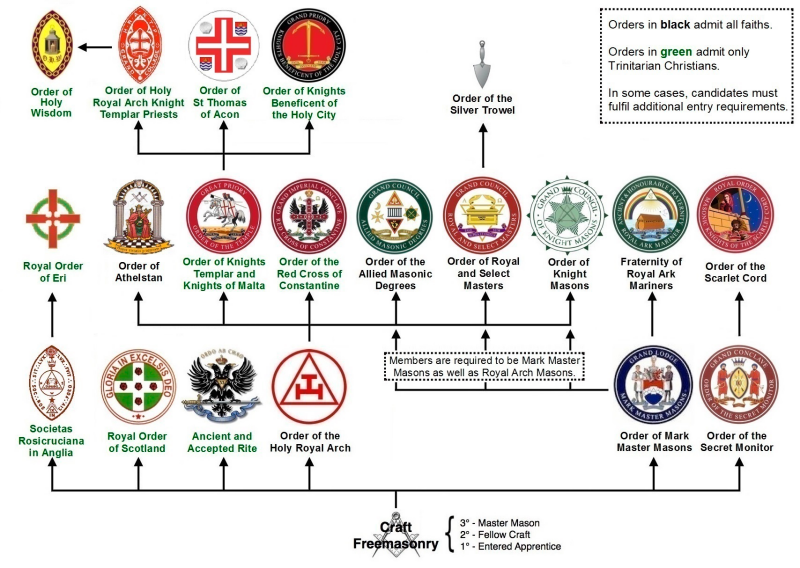
[1] https://en.wikipedia.org/wiki/Order_of_the_Secret_Monitor
Further Reading and Resources:
Information on the history, and the modern Order of the Secret Monitor https://osmbch.org.uk/
Mark Masons’ Hall – the Home of the Companion Orders in Freemasonry – Order of the Secret Monitor

Beyond the Craft 6th Edition
By: Keith B. Jackson
Beyond the Craft has been one of Lewis Masonic’s best-selling titles since it was first published in 1980. Since then author Keith Jackson has updated the book through five editions, most recently in 2005 but there is now scope for a major revision of this book to bring in all the newly founded orders that have not been included up to now and to reflect the expansion in membership of many of these orders in recent years.
To accommodate this extra material the book will be produced in a slightly larger paperback format. This fully revised edition, fully illustrated in colour will be an indispensible guide to Masonic Orders practised in the UK, giving invaluable in-depth information about the history of each Order, as well as detailing the joing qualifications, hierarchy, important rituals, teachings, regalia and much more.
The book is recognised as one of the most relevant books a Freemason can acquire and the updates will allow it to continue to keep its position as an indispensible guide for all those Freemasons wishing to explore other degrees within the Masonic structure
Recent Articles: of current interest
 Embrace the future of Masonry in the Age of Leisure! Imagine an era where technology empowers deeper connections, offering a tapestry of diverse groups united by Freemasonry’s timeless values. Envision hybrid meetings transcending borders, fostering brotherhood across continents. This optimistic future cultivates intellectual growth and social interaction, heralding a Masonic renaissance for all. |
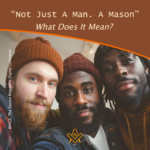 “Not Just A Man. A Mason”: What Does It Mean? Embrace the profound essence of Freemasonry, not merely a group but a journey of integrity, shaping men of dignity. By adopting virtues such as honesty, justice, and brotherly love, Freemasonry transcends time, urging us towards a dignified life. It’s more than being a man; it’s about living with unyielding dignity. |
 Multiculturism and the Culture of Freemasonry Freemasonry, with its deep roots in universal principles such as individual freedoms, education, and the pursuit of science, stands as a beacon of unity in a world divided by conflicting ideologies. By embracing the tenets of Freemasonry, including respect, peace, and mutual understanding, we can navigate societal challenges and foster a more harmonious world. |
 Embrace the new paradigm of eco-conscious living in the 21st century. Freemasonry, a cornerstone of society, must evolve, placing Nature at its heart. Reject anthropocentrism, embrace deep ecology, and champion sustainable living and global cooperation. Let Freemasonry lead by example, advocating for a world where humans and nature coexist harmoniously. |
 How Freemasonry Has Woven Itself into the Fabric of Society Like the weathered stones of an ancient temple, Freemasonry's origins are shrouded in mystery. This fraternal order has woven invisible threads throughout society's fabric since emerging in the 1600s. Despite declining membership, Freemasonry's influential legacy endures, seen in philanthropy, architecture, and the ideals of legendary members. Though facing challenges, revival remains possible if it adapts traditions to the modern era. |
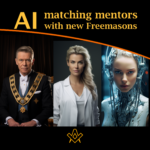 AI help in matching mentors with new Freemasons Harnessing AI for Freemasonry Mentorship: A Comparative Analysis. Freemasonry, an age-old fraternity, seeks to enhance its mentorship program by leveraging AI. While the Grand Master suggests detailed member profiles for matching, a Professional Coach emphasizes personality compatibility. Meanwhile, an AI Bot proposes machine learning for pattern recognition. Dive in to explore the potential and pitfalls of each approach. |
 Masonic Charities P.2 – The Shriners Discover the Shriners' legacy within Freemasonry; delve into their profound commitment to philanthropy and see how Masonic Charities demonstrate brotherly love, relief, and truth. Become inspired by the bonds that unite Shriners around the globe and their impactful work in local communities. |
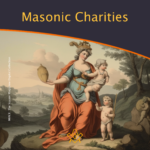 Freemasonry's commitment to charity has always been a priority and remains a core principle, reflecting its mission to promote brotherly love, relief, and truth in the world. Part 1 of the series gives an introduction to the establishment of the main Masonic Charitable endeavours in the 18th and 19th centuries and several key influencers. |
 Solomon Learning and Development Platform The Intersection of Freemasonry and Technology: Embracing the Digital Age with the New |
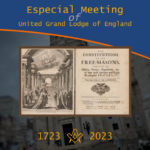 Especial Meeting of United Grand Lodge of England The year 2023 marks the tercentenary of the publication in London of the Constitutions of the Freemasons, based on Enlightenment principles that provide the philosophical foundations of modern Freemasonry. Why are the 1723 Constitutions important? Many Masonic histories have been concerned with ‘when’ and ‘what’. We also explore ‘why?’ |
 Like every other incident of initiation it is in the light of the larger meanings of Freemasonry that we must interpret the Rite of Destitution. But what does it mean? |
 Society of Grand Lodges in Alliance (SOGLIA) is a confederation of Grand Freemason Obediences in which all members obey the principles of Regularity. Assembled annually, in different places of the world, in order to share fellowship and to promote Masonic tradition, SOGLIA members are respecting the autonomy of each Grand Lodge. |
 Confederation of the Grand Lodges of Europe and the Mediterranean - Universal Freemasonry and its intellectual property are less and less taken into account in the current times of constant movement and unclear future prospects. |
 The Book of Law in Brazilian Freemasonry We are informed that, Freemasonry it is not a religion, but the candidate has a belief in a creative principle, which later, we call the Great Architect of the Universe. - by Fernando Rodrigues de Souza |
 Mike's Masonic Walks And Talks WBro. Mike Neville is a Masonic author and lecturer. He offers walks and talks primarily around London, based on his vast knowledge of the area and his specialist subjects, which cover all aspects of Masonic history. |
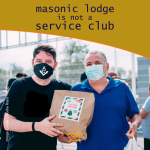 A Masonic lodge is not a service club An address delivered to the 10th Annual Conference of Western Canadian Grand Lodges (1950) in response to the question, "Should Our Western Grand Lodges Sponsor a Specific Program?" By |
 The Order of Bees was established as a youth initiative for the boys and girls of Prince Hall Freemasons, and symbolises the relationship existing between the activities of the youth and the family of bees. |
 The Confederación Masónica Interamericana (CMI) was founded in 1947, is a non-profit organization that groups together 92 Great Masonic Powers, admitted as members and distributed in 26 countries in South, Central, North, Caribbean and Europe. |
 This smartphone app is designed to work with all Freemasons from both Regular and Independent Grand Lodges around the world. |
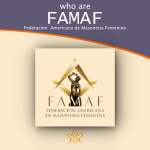 The American Federation of Feminine Freemasonry (FAMAF) is an organization that brings together Grand Lodges, Grand Orients and Confederations of Feminine Masonic Grand Lodges from the American continent. |
 The third largest Masonic Alliance of independent grand lodges, which currently has over 500,000 members in the world and an incredible resource of "good people with a good reputation" from around the world. |
 A Guiding Paw - my faithful 'brethren' A heart-warming story of one Mason's best friends – and how Gary's faithful guide dogs have helped fulfil both his Masonic life but also his valuable work in public service. |
 A visit to the Mother Lodge of Scotland Let me take you to the heart of Scotland to meet our Brethren of the Mother Lodge of Scotland, a journey into one of Freemasonry's deepest roots. Our guide Carlos Oliveira Santos who is from |
 An introduction to VEREINIGTE GROSSLOGEN von Deutschland / UNITED GRAND LODGES of Germany |
 International Masonic Union CATENA An international association of Grand Lodges and independent Lodges, with all true Masonic traditions, which adhere to the basic principles of the equal standing of men and women in Freemasonry |
 Social Impact of Prince Hall Freemasonry in D.C., 1825-1900. Alonza Tehuti Evans discusses Prince Hall Freemasonry, founded by African Americans. |
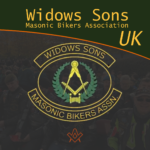 Who are the Widows Sons, and what do they do, and how can you join ? |
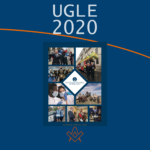 For the first time in its 300 year history UGLE has published an Annual Review |
 Founded in 1919 and named after the Grand Master of the Knights Templar, this International Order has helped young boys become great men. |
 9th International Conference of Freemasonry Hidden Meanings: Esotericism and Masonic Connections |
 An introduction to CLIPSAS and we look at who are they and what do they do |
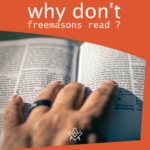 The title of this article will seem somewhat of an oxymoron, because at this precise moment you, most likely a Freemason, is reading this |
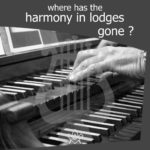 Music can make you either remember everything or forget everything! They even call it the 'rhythm' of life because life does have a beat, a rhythm, a song! Music is equally important for Freemasons. |
 Young Masons' Inter-Club Virtual Social An initiative was created to initially keep Brethren engaged in their Masonry whilst the restrictions of the COVID-19 pandemic are in place. |
 I've heard people say that we don't have heroes |
 What can we learn from Steve Jobs' address given at Stanford in 2005 |
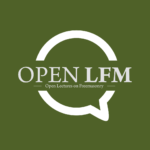 Open Lectures on Freemasonry as a series of monthly online lectures that aims to increase the visibility and accessibility of research into Freemasonry. The lectures are open to anyone who is interested. |
 What Kind of Library Do You Have? Many Brothers have no clue as to what kind of "Craft" library they actually have in their home or office. Most of these Brothers don’t care that they don't know – so, what kind of library do you have? |
 Russian Freemasonry a combination of a short sketch of its history and a review of the present-day Masonic landscape in this country |
 A brief outline showing the differences and similarities within Freemasonry |
masonic knowledge
to be a better citizen of the world
share the square with two brothers

click image to open email app on mobile device


